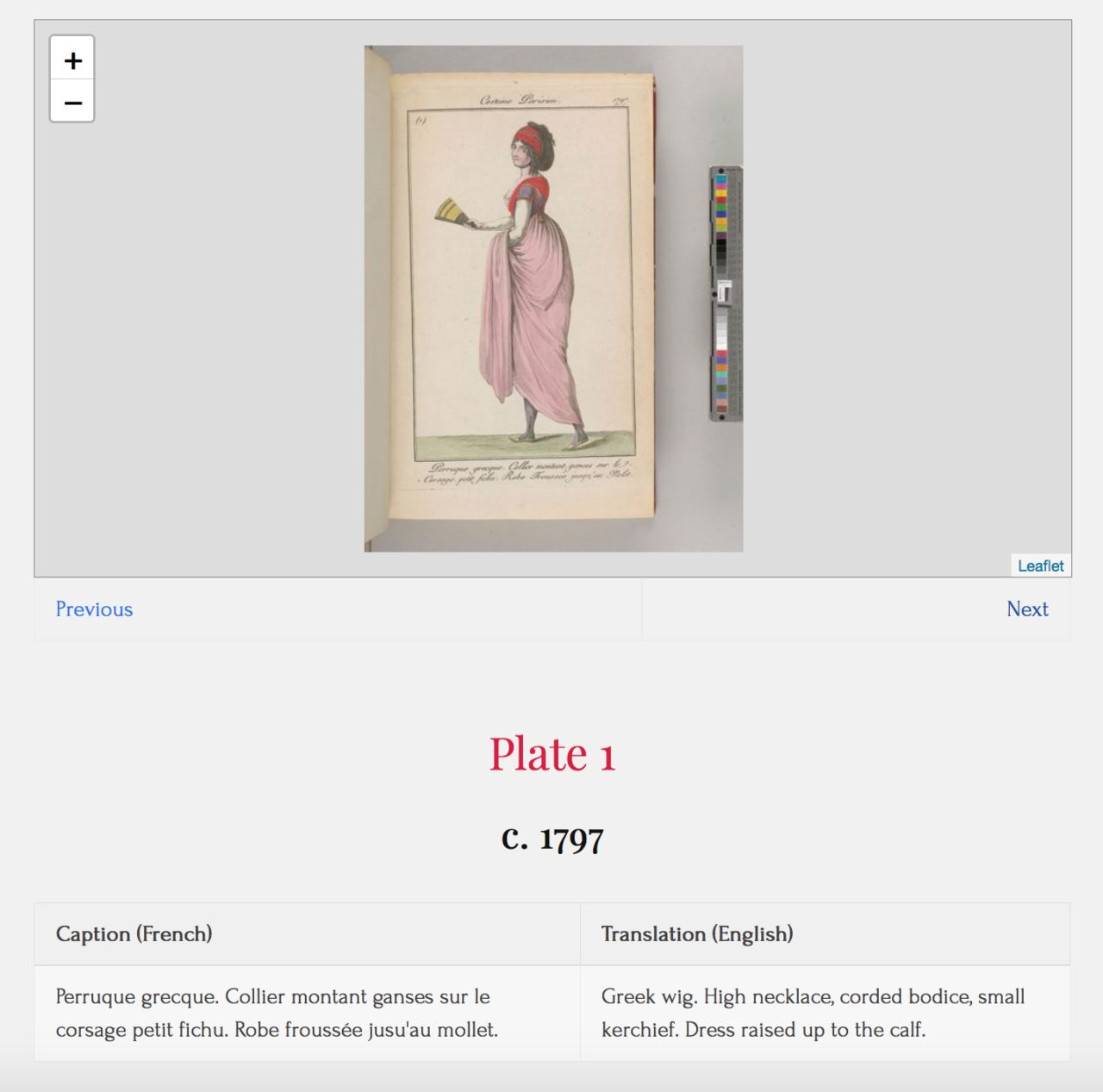The Morgan Library & Museum’s collection of prints includes an extremely rare set of the world’s most radical fashion plates. Recently rediscovered, these revolutionary 1797-1804 pictures from the Journal des Dames et des Modes, in exceptionally good condition, have been digitized and edited in a website, Style Revolution.
Thanks to a collaboration between the Morgan and the Columbia University Library, all of the 1797-1804 plates are available for the first time in their entirety. Maps, a timeline, a macroscope, essays, color guides and clothing glossaries explain the plates’ significance. All have been designed by graduate students from Columbia, Bard, and NYU. In addition, the DesignMuseum Danmark in Copenhagen, holder of the only known complete surviving text for this period in a public collection, has agreed to digitize the accompanying text. Soon, therefore, the Morgan’s plates will be reunited with the lively descriptions and articles that make them even more historically remarkable.
Meanwhile, a group of Barnard College students has created an Instagram account to showcase the Morgan’s plates in a contemporary idiom. Besides modeling recreated 1797-1804 looks on their fellow-students, the Instagram feature posts on topics such as red victim-ribbons, the absence of undergarments, and recurring revivals of the Journal’s style innovations. It launched on June 15th, 2018.
Follow them @style_revolution_journal!
Plate 1 with French caption and English translation.
The French Revolution of 1789 promised that women and men could completely reinvent themselves, with the help of a total style transformation. Between 1797 and 1804, after the political crisis of the first revolutionary years and before Napoleon became Emperor, the Journal des dames et des modes showed Europeans and North Americans how to look, read, and entertain themselves as modern individuals. It rejected the dress rules and materials that had signaled static social rank in favor of mobile and sexual self-expression through consumer choice. Women turned their underwear into outerwear, cropped their hair, and invented the handbag. Men gave up embroidery, lace, and silks in exchange for the suits and tailoring they have worn ever since. For women, however, this style revolution was considered too radical, and began to be reversed after 1804.
References:
- “Style Revolution.” https://stylerevolution.github.io/.
- “Style Revolution Journal (@style_revolution_journal).” https://www.instagram.com/style_revolution_journal/.












